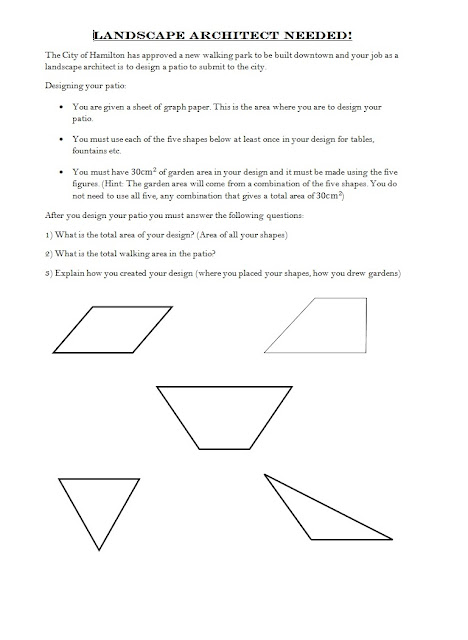This week in my class we took a focus on the student's perspective when planning a lesson. Below is a script we created showing student concerns after receiving instructions for consolidating the lesson.
Teacher: Now, instead of solving an
equation given to you, you are going to create your own equation with a partner
and you must come up with a word problem that corresponds with the equation you
create.
For example we make an equation,
29 - x= 13. One example of a corresponding word problem would be "Jenny is
on the Price is Right and the price she guessed for a new toaster was $29. The
difference between Jenny's guess and the actual retail price is $13. What is
the actual retail price?"
Then you would solve for x and
show all your steps.
Student 1: Miss,
can we use any numbers?
Teacher: Yes, in your equation any
numbers can be used and you must have one variable "x" to solve for.
Student 2: So do
you have to show all the steps when you solve or can you just write "x =
..."
Teacher: When you solve your equation,
I want to see all the steps you took to isolate or solve for x, and end by
clearly stating statement "x = value".
Student 3: Can we
do this in pairs?
Teacher: Yes groups of two only. Each
group of two will hand in one paper with one word problem, equation and
solution steps.
When planning any type of lesson or assignment, it is
important to remember that explanations or instructions you hope to provide to
the students may not be as clear and concise to them as they are to you.






